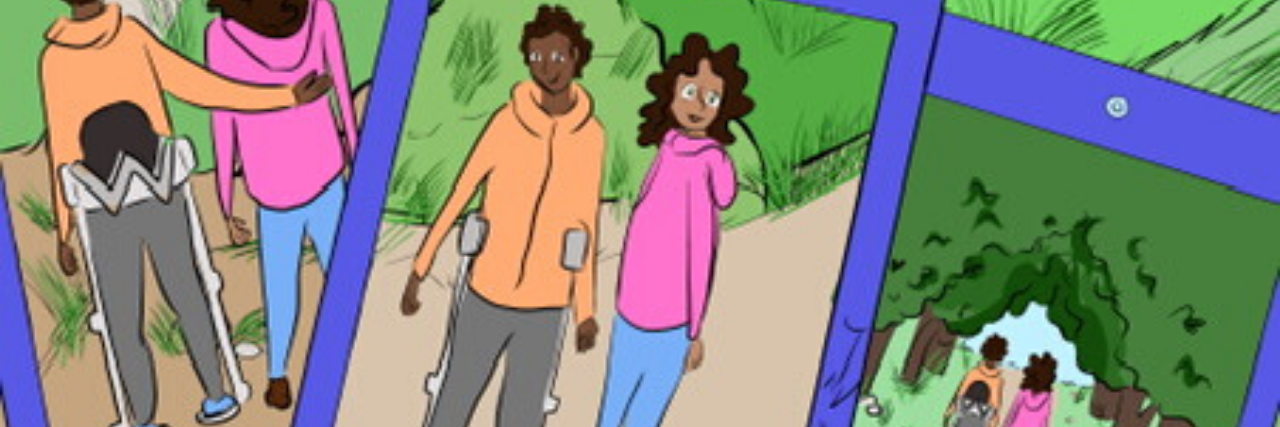3 Disabled Writers Imagine the Future of Mobility Assistance
Editor's Note
If you want to have a conversation with people who “get it,” join The Mighty’s Chat Space group.
What’s new: Three writers with disabilities were commissioned by the Toyota Mobility Foundation to contribute stories to the anthology, “Going Further: Imagining the Futures of Mobility.” The series was designed to spotlight the finalist high-tech mobility assistance devices in the Mobility Unlimited Challenge.
- John Wiswell, a disabled writer living in New York, authored “Let Me Show You Something,” a romance set in the wilderness
- Brianna Albers, who has spinal muscular atrophy, wrote “The Velocity of Freefall,” sharing how one woman realized her dream of traveling the world
- “Skye Finds Her Magic” was written by U.K.-based disabled writer Penny Pepper, and it follows a young girl and her father as they explore the possibilities of assistive tech
- The entire “Going Further” series was illustrated by Ciara Chapman, who lives with chronic pain
The tech behind the stories: The Mobility Unlimited Challenge tasked innovators with developing new assistive technology for people with lower limb paralysis. Every competing team collaborated alongside people with disabilities throughout the project. The challenge, which kicked off in 2017, will conclude with one winning team earning a $1 million prize. Finalist mobility devices include:
- The EvoWalk smart wearable leg sleeve stimulates the leg muscles to assist movement
- An ultra-lightweight manual Phoenix AI wheelchair with smart sensors to make it more responsive to its user
- Qolo standing device, a “lightweight, mobile exoskeleton on wheels” controlled by the upper body that allows you to sit or stand
- A robotic, motor-powered exoskeleton device by Quix
- WheeM-i provides wheelchair users a roll-on electric vehicle using a bike-sharing model to make cities more accessible
The Frontlines: Many people with disabilities and chronic illnesses rely on mobility devices — 6.8 million people in the U.S. — such as wheelchairs, walkers and canes. However, despite laws like the Americans With Disabilities Act that require public spaces to be disability accessible, this isn’t usually the case.
- A 2015 report found that less than 1% of housing units in the U.S. are accessible to wheelchair users
- Another survey found 20% of people with disabilities encountered a building, service or transportation that wasn’t accessible at least once a day, and 12% encountered a lack of access multiple times per day
- About 80% of people with disabilities said public transportation was not easy to navigate for people with disabilities
A Mighty Voice: Technology can improve access in a world that prioritizes mobility. But as our disability editor Karin Willison shared, people with disabilities must be included in the process. “Sometimes my wheelchair moves in a way that feels natural, but other times I’m acutely aware of its limitations. Interestingly, many of those limitations are not inherent to the system but programmed by the manufacturer.” You can submit your first person story, too.
Get more on disability: Sign up for our weekly disability newsletter.
From Our Community:
Add your voice: Join The Mighty’s Chat Space group by downloading our app or comment below.
Other things to know: Looking for some other thoughts on assistive devices? Check out these Mighty stories:
- It’s Time to End the Stigma Around Mobility Aids
- How to Choose the Right Mobility Aid
- How I Changed My Relationship With My Mobility Aids
How to take action: You can read all three stories in “Going Further: Imagining the Futures of Mobility” online for free here and download the PDF here.
Images via Ciara Chapman/Toyota Mobility Foundation

